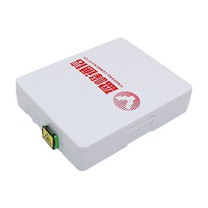Since the 1990s, four generations of cellular network technologies have propelled us from “bag phones” using slow 1G voice networks to sleek devices using 4G LTE. Today we can watch seemingly limitless video content on mobile devices, monitor our fitness using a wristband, and answer the front door after seeing who is standing outside using a smartphone app. Now the mobile industry—and other tech enthusiasts—are talking about the next evolution of wireless technology, typically called “5G”. 5G is not just an increase in bandwidth on a mobile phone, unlike previous generations of mobile tech, but rather a strategy and massive shift in how mobile operators will deliver services, manage competition, reduce their costs, and monetize. 5G radio access technologies will include next generation cellular specifications, but will also include next generation Wi-Fi specifications and most likely newer wireless technologies for specialized communications (e.g. Internet of Things specific). That’s because our connected future is so varied: devices of the future will include large numbers of autonomous vehicles, augmented/virtual reality (AR/VR) devices, infrastructure sensors for smart transportation and public safety applications, and airborne drones. 5G will enable these kinds of technologies at exceptional scales, data rates, and low latencies. To support all of this, 5G is expected to provide gigabit speeds, sub one-millisecond latency, and the capacity to connect an astonishing 2.5 million devices per square mile.
Driving 5G with the Internet of Things
Until recently, people used the Internet to connect with each other, conduct brief transactions, and get information. Now, we connect physical objects to the Internet and to each other through small, embedded sensors. The ecosystem this creates, the Internet of Things, is one of ubiquitous, distributed computing, where “smart” devices securely collect and transmit data to other devices automatically and in real time. The Internet of Things, which has industrial, consumer, and civic uses, will drive economic growth and further change the way we live, work, and run our cities. These technologies will be critical for our economy: Consumer Technology Association projections show that in 2016 alone, Internet of Things applications helped drive 30 percent of the consumer technology industry’s overall $287 billion in retail revenues. This does not include industrial, commercial, or city-level applications. The promise of 5G is great—and, indeed, essential to the widespread adoption of Internet of Things technologies—but so too are the challenges to network deployment. 2G and 3G wireless networks often used copper-based backhaul to connect cell sites. While these networks have served consumers well, carriers and network operators all over the country are converting these legacy systems over to fiber. Why? Because fiber is a future-proof technology, capable of supporting higher capacities and the low latencies that our 5G networks will need. Areas targeted for 5G coverage will also require lots of fiber to be successful. This is not just for capacity reasons, but also for network diversity, availability, and coverage, since all three of these performance goals are achieved through a greater number of interconnected paths of fiber. But 5G will also place enormous demands on fixed-wireline networks. New 5G technologies will use much higher radio frequencies than today’s cellular networks do. While these higher frequencies carry larger amounts of data, they also have very short ranges. For 5G to work well, many additional small radios or “cells” must be installed close together—as close as 200 feet apart. To provide multi-gigabit service to many users and applications, these small cells will need to be connected to hundreds of thousands—perhaps millions—of miles of new fiber optic cable. As wireless networks grow—through small cells and macro cells—fiber will continue to be the first choice technology as the building blocks to the network. 12Even without 5G, we are experiencing a huge boom in mobile connectivity. By 2021, the world will have 27.1 billion networked devices, up 58.47 percent from 17.1 billion in 2016. Forty-three percent of these devices will be mobile-connected, and they will consume far more data; a smartphone in 2021 will consume an average of 14.9 GB of data monthly, four times the 2016 level.






